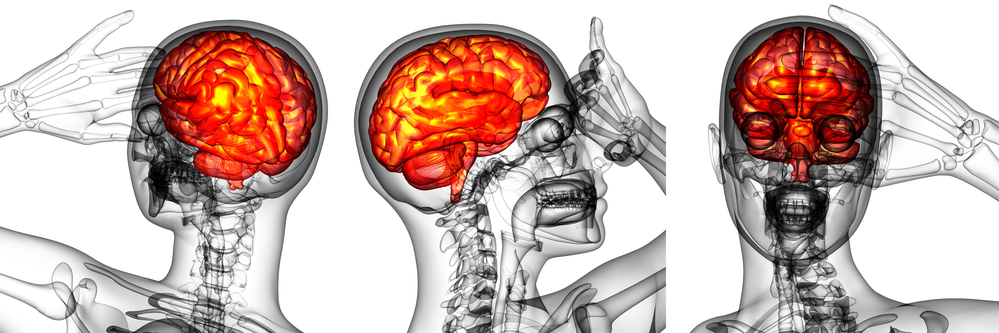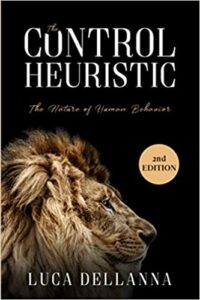Emotions in the Driver's Seat
By Arnold Kling


- A common misconception is that if a person has an incentive to do something, that incentive will influence his behavior… people are incentivized against smoking…
- Almost every smoker knows the costs and risks of their habit, even if they downplay them. The problem is that, roughly speaking, the part of the brain that stores knowledge is not the part of the brain that decides what to do.
- —Luca Dellanna, The Control Heuristic,1 p. 159
Except that you are in the back seat. The driver holding the steering wheel may or may not listen to you. Other factors may influence which way he turns the car.
In this metaphor for the brain, the passenger in the back seat is your cortex. The driver in the front seat is your basal ganglia.
(Luca Dellanna, author of The Control Heuristic,2 uses a different metaphor, in which the cortex is like the middle managers in a corporation, with the basal ganglia playing the role of CEO. This metaphor stresses that there are a variety of inputs that are sent to the basal ganglia.)
The driver in the back seat sends suggestions to the driver. But the driver will move the steering wheel in order to maximize what Dellanna calls the “expected emotional outcome,” or EEO. This EEO is an immediate feeling, not a long-term calculation.
- EEO is a highly subjective evaluation of how good we expect an action to make us feel… our basal ganglia have access to feelings only. This means that they can only see the subset of what the cortex knows that produces emotions. p. 55
Suppose that the driver makes a strange turn. The passenger will proceed to propose reasons that try to rationalize it. But the driver will choose which reason to use to justify the turn. The basal ganglia will pick the reason that maximizes EEO, which typically means choosing reasons that best conform to social norms.
- The cortex proposes multiple ways to guess the reason for which we took action… [The basal ganglia] prioritizes the mental actions not based on whether they make sense. Instead, it uses the EEO. p. 64
To get the driver to take us where we want to go, we have to make sure that the short-term emotional rewards that we put in front of him lead him to steer the car toward our long-term goals.
- For example, if we want to get a habit of running in the morning, it is not enough to know that our basal ganglia are currently stopping us because the EEO we associate with running is low. Instead, we must take action to increase the EEO—for example, by wearing headphones and listening to our favorite podcast during the run. p. 27
Although self-control is the central problem in The Control Heuristic, Dellanna offers many interesting observations on the side, and they are my favorite elements in the book. But many of these asides are only incompletely developed.
One of the most interesting tangents in the book concerns beliefs. How do we form our beliefs? How can they change?
Dellanna argues that what we describe as “truth” is instead coherence. There are many inputs to our beliefs. When they all agree with one another, the belief is strongly coherent, and we treat it as true. Different people can disagree about what is true, because:
- Everyone’s chain of coherence is based on his or her personal experiences. p. 173
Our beliefs are affected by our desire to affiliate with others. When the affiliation is strong, the beliefs are strong:
- The more costly it is to hold and express a belief, socially or financially, the more loyalty it generates within the few sharing it. p. 175
To me, this suggests the mechanism holding cults and religions together. Their shared costly beliefs are a binding force.
Dellanna also argues that different personalities demand different degrees of what he calls “resolution.” At high resolution, we examine complex beliefs in detail for coherence. At low resolution, we accept the gist of a belief. Expressing a thought at high-resolution means giving a lot of justifications, clarifications, and caveats. Expressing it at low-resolution means taking shortcuts and using simplifications.
- Complex fields such as physics and mathematics, where rigor and exactness are critical, are best studied at high resolutions. Other fields, such as politics and sports, in which rigor and exactness are less relevant, are best studied at low resolutions… politicians are selected for their ability to communicate low-resolution stances that resonate with their electorate. p. 180
He suggests that people who are mildly on the autism spectrum may demand higher resolution than people who are closer to normal.
What happens when not all of our inputs support the same belief? Dellanna says that we resort to creating narratives.
- A narrative is any story that takes two previously incompatible states and connects them, restoring coherence…
- Narratives might or might not correspond to reality. Truth is not a requirement for a narrative to be adopted; only coherence is…
- When a set of events is incoherent, people use narratives to restore coherence. Narratives are our automatic reaction to incoherent events. p. 187
There is an inherent bias against holding nuanced beliefs.
Holding complex thoughts made of multiple statements makes people vulnerable to accusations that take a single statement out of context… The rationale for rejecting complex thoughts is that people can be socially punished for holding them. p. 177
For more on these topics, see Gary Greenberg on Depression, Addiction, and the Brain. EconTalk.
The passenger in the back seat believes that the car is on a course for truth. But the driver holding the steering wheel might not take us there.
Footnotes
[1] Luca Dellanna, The Control Heuristic: The Nature of Human Behavior. Independently published, July 2020.
[2] I was made aware of The Control Heuristic by listening to the EconTalk podcast episode Luca Dellanna on Compulsion, Self-deception, and the Brain.
*Arnold Kling has a Ph.D. in economics from the Massachusetts Institute of Technology. He is the author of several books, including Crisis of Abundance: Rethinking How We Pay for Health Care; Invisible Wealth: The Hidden Story of How Markets Work; Unchecked and Unbalanced: How the Discrepancy Between Knowledge and Power Caused the Financial Crisis and Threatens Democracy; and Specialization and Trade: A Re-introduction to Economics. He contributed to EconLog from January 2003 through August 2012.
Read more of what Arnold Kling’s been reading. For more book reviews and articles by Arnold Kling, see the Archive.
